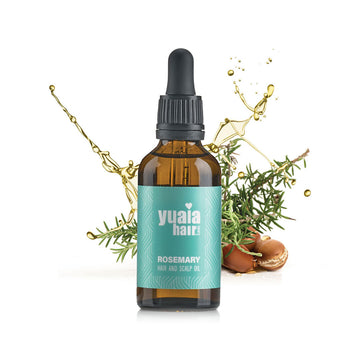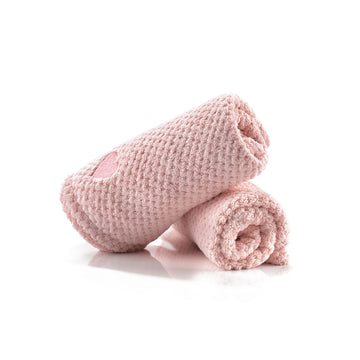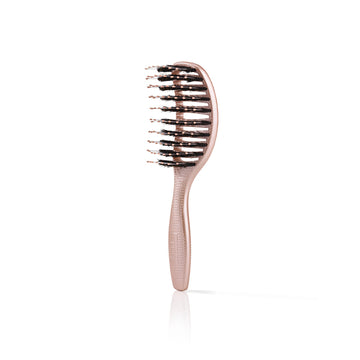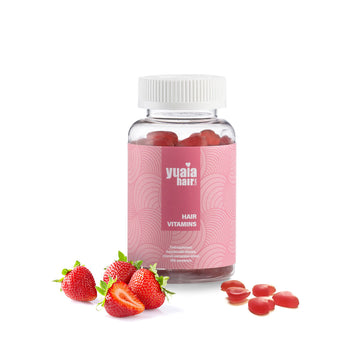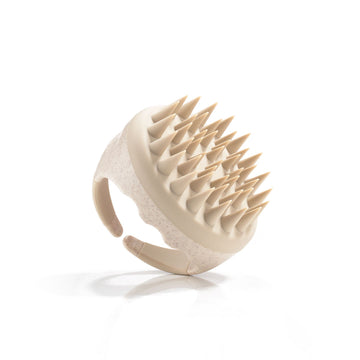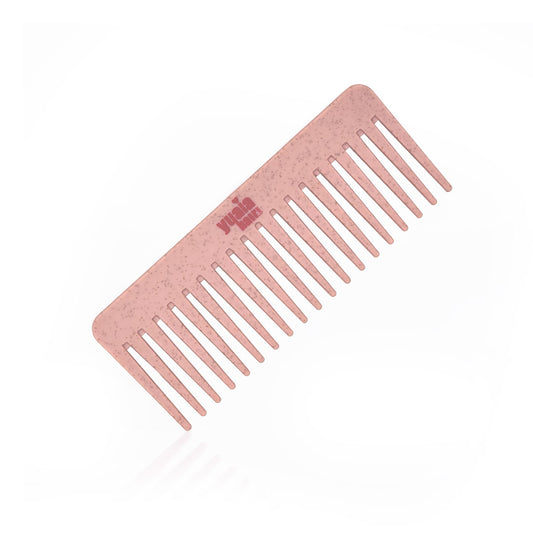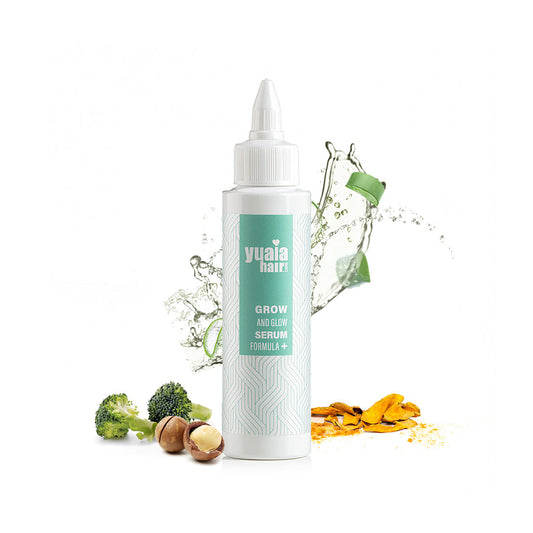
Different techniques for cutting your own hair
When it comes to cutting your own hair, there are several techniques you can use to achieve a clean and stylish look at home. Choosing the right method depends on your hair type, length, and personal preferences. From dividing your hair into manageable sections to using twists and ponytails, each technique offers its own unique approach to maintaining a regular trim or creating a fresh new style. By understanding the basics of these methods, you'll be better equipped to achieve the look you desire with confidence.
The four section method
The four-section method is a straightforward technique that promotes precision and balance when cutting hair. By dividing the hair into four manageable sections, this approach allows for controlled trimming, ensuring an even length throughout. It's especially useful for maintaining a uniform hairstyle or performing regular trims at home.
Step-by-step instructions
-
Part hair into four equal sections
Begin by creating a central part from the forehead down to the nape of the neck, splitting your hair into two main sections. Next, make a horizontal part from ear to ear, intersecting the central part. This will divide the hair into four sections: two at the front and two at the back. -
Secure each section with clips or elastics
Use hair clips or elastics to hold each section in place. This organization helps keep the hair manageable and prevents other sections from interfering while you work. - Trim each section
- Back sections: Start with one of the back sections. Release the clip or elastic, comb the hair straight down, and determine the desired length. Hold the hair between your fingers at the cutting point and cut straight across using sharp haircutting shears. Trim each section individually by combing hair down and cutting straight across. Repeat this process for the other back section, making sure both sides are even.
- Front sections: Move on to the front sections. Release one clip or elastic, comb the hair forward, and match the length to the corresponding back section. Trim each section individually by combing hair down and cutting straight across. Repeat for the other front section.
-
Check for uniformity
After trimming all sections, release the clips or elastics and comb through your hair thoroughly. Use a mirror to inspect the cut from different angles, ensuring the length is even across all sections. Make any necessary adjustments to correct uneven areas.
By using the four-section method, you can achieve a balanced and professional-looking haircut at home, maintaining uniformity and minimizing the risk of uneven results.
The twist method
The twist method is an effective technique for trimming bangs or front sections of hair, ensuring a symmetrical and soft appearance. By twisting the hair before cutting, this method helps achieve even results and prevents a harsh or blunt finish.
Step-by-step instructions
-
Isolate the section of hair to be trimmed
Begin by selecting the portion of hair you wish to trim, such as bangs or front sections. Use a comb to part this section from the rest of your hair, ensuring a clean and precise separation. Clip or tie back the remaining hair to keep it out of the way during the trimming process. -
Twist the hair tightly in one direction
Take the isolated section and twist it tightly in a consistent direction. The twisting motion gathers the hair together, allowing for a uniform cut. Ensure the twist is firm and even from the roots to the ends to maintain consistency. -
Trim the ends at the desired length
Hold the twisted section firmly between your fingers at the point where you intend to cut. Using sharp haircutting shears, cut straight across the twist at the desired length. It's advisable to start by cutting a small amount, as you can always trim more if needed. -
Untwist and comb through
Carefully release the twist and comb through the trimmed section to reveal the final result. Examine the cut for evenness and symmetry. If you notice any uneven areas or longer strands, make minor adjustments by trimming as necessary to achieve a balanced and polished look.
The low ponytail method
The low ponytail method is a straightforward approach for achieving a straight cut, particularly useful for individuals with longer hair. By gathering the hair at the nape of the neck, this technique provides a simple way to create a uniform length without complex sectioning or multiple steps. It works best for those seeking a blunt, even trim.
Step-by-step instructions
-
Create a low ponytail
Begin by brushing your hair to remove any tangles, ensuring it's smooth and manageable. Gather all your hair at the nape of your neck, making sure it's centered and free of bumps. Secure the ponytail with a hair elastic, ensuring it's tight enough to hold the hair firmly in place. -
Slide the elastic to the desired cutting length
Stand in front of a mirror to accurately determine the length you wish to cut. Carefully slide the elastic band down the length of the ponytail to the point where you want to trim. Ensure the elastic is level and aligned, as this will dictate the evenness of your cut. It's advisable to start with a longer length; you can always trim more if needed. -
Trim the hair
Hold the ponytail firmly below the elastic to keep it taut. Using sharp haircutting shears, cut straight across just below the elastic band. Make the cut in small, controlled snips to maintain precision and reduce the risk of an uneven line. Take your time during this step to ensure a clean, straight cut. -
Release the ponytail and check for evenness
Gently remove the elastic and allow your hair to fall naturally. Comb through your hair to let it settle into its natural position. Stand in front of a mirror and inspect the ends to ensure they are even. If you notice any uneven areas or longer strands, make minor adjustments by trimming as necessary to achieve a balanced and polished look.
How to cut your own hair in layers
Layered haircuts can enhance volume, add movement, and reduce bulk, making them a popular choice for various hair types. Achieving a layered look at home is feasible with careful attention and the right techniques.
Step-by-step guide to cutting layers at home using the ponytail method
The ponytail method, also known as the "unicorn cut," is a popular DIY technique for creating layers, giving hair a stylish, layered look with minimal effort.
-
Prepare your hair
Start with clean, damp hair to ensure even cutting. Comb through your hair thoroughly to remove any tangles, making it easier to gather and cut evenly. -
Create a high ponytail
Flip your head upside down and gather all your hair into a ponytail positioned at the center of your forehead (near the hairline). Secure the ponytail tightly with an elastic band to prevent movement during cutting. -
Determine the length to cut
Decide how much length you want to trim off the ponytail. Remember, cutting more will create shorter, more dramatic layers. It’s recommended to start with a conservative length if you’re unsure. -
Cut the hair
Hold the end of the ponytail firmly or, alternatively, place an additional elastic at the point where you want to cut. Using sharp haircutting shears, cut straight across at your desired length. Ensure you cut with precision for consistent results. -
Refine the cut
To soften the edges and create a more natural appearance, point-cut the ends by snipping vertically into the hair. This step helps reduce bluntness and adds a polished finish. -
Release and check
Remove the elastic and let your hair fall naturally. Comb through your hair to check the layers. Inspect for evenness and symmetry, and make any necessary minor adjustments to achieve the desired look. This step ensures your layers appear balanced and well-blended.
Tips for different hair lengths and textures
When cutting your own hair, it's essential to consider your hair's length and texture to achieve the best results.
Short hair: The ponytail method is generally unsuitable for short hair due to insufficient length to gather into a ponytail. Instead, section your hair and cut each part individually. This approach allows for greater control and precision, ensuring an even cut.
Medium to long hair: The ponytail method works well for medium to long hair, but exercise caution with the amount you trim. Longer hair reveals more dramatic layering, so cutting too much can lead to unintended results. It's advisable to start by cutting a small amount; you can always trim more if needed.
Curly or wavy hair: Curly and wavy hair require extra care during cutting. Curls can spring up and appear shorter when dry, so it's advisable to cut less than you think necessary. This approach helps prevent cutting off more than intended and maintains the desired length.
Fine hair: Adding too many layers can make fine hair look thinner. Opt for subtle layers to maintain volume and avoid over-layering, which can lead to a lack of fullness.
Thick hair: Layers can help reduce bulk in thick hair, making it more manageable. Ensure even distribution of layers to avoid an unbalanced look. Proper layering can add movement and prevent the hair from appearing too heavy.
If you're uncertain about cutting your own hair, consulting a professional stylist is recommended. They can provide personalized advice and techniques tailored to your specific hair type and desired style.
How to cut your own hair as a man
Cutting your own hair at home can be a practical and cost-effective option, especially when focusing on popular men's styles like buzz cuts, fades, and trims. With the right tools and techniques, you can achieve a polished and stylish look on your own schedule.
Buzz cuts offer a uniform, short length across the entire head, making them low-maintenance and timeless. Achieving this style at home is straightforward with clippers and a consistent guard length.
Fades involve hair that gradually transitions from longer at the top to shorter on the sides and back, creating a smooth blend. Precision with clipper guards and blending techniques is essential for a seamless result.
Trims help maintain your existing style by removing split ends and reducing excess length. Regular trims keep hair neat and tidy without changing the overall look. With patience, you can achieve a clean, well-maintained appearance at home.
Step-by-step guide to cutting your own hair
Buzz cut
Achieving a buzz cut at home is a simple yet effective way to maintain a clean and uniform look. This low-maintenance style requires minimal tools and is perfect for those seeking a practical, no-fuss haircut.
-
Select the desired length
Choose a clipper guard that matches your preferred hair length. Clipper guards range in sizes, with a #3 guard leaving hair approximately 3/8 inch long. If you prefer a shorter cut, opt for a smaller guard size; for a longer buzz, choose a higher guard number. -
Cut the top
Attach the chosen guard to your clippers. Start by placing the clippers at your front hairline and move them toward the crown in straight lines. Use smooth, consistent strokes to ensure even coverage, and repeat until all hair on top is uniformly trimmed. -
Cut the sides and back
Continue using the same guard and begin cutting from the sideburns, moving the clippers upward toward the top of your head. Repeat the process from the nape of your neck up to the crown, working in upward motions. Maintain consistent pressure for even results. -
Check for evenness
Use a handheld mirror in conjunction with a fixed mirror to inspect all angles of your head. Make additional passes with the clippers as needed to ensure a uniform length and clean finish. Take your time to achieve a polished look from every perspective.
Fade
Creating a fade haircut at home involves blending hair from longer on the top to shorter on the sides and back, resulting in a smooth, gradual transition. This popular style requires precision and attention to detail for a seamless look.
- Determine the fade type: First, decide whether you want a low, mid, or high fade. A low fade starts near the ears, a mid fade begins around the temple area, and a high fade starts closer to the crown. Your choice will dictate where the transition from short to long begins and affects the overall appearance of the haircut.
- Start with the longest guard: Attach the longest clipper guard (e.g., #4) and trim the top section of your hair. Move the clippers from the front hairline to the crown, maintaining smooth, consistent strokes. This will establish the length of the top section and serve as a guide for the fade.
- Create the fade
- Lower section: Use a shorter guard (e.g., #1) to trim hair from the sideburns up to the designated fade line. Move the clippers upward in controlled motions to avoid creating harsh lines.
- Middle section: Switch to a medium guard (e.g., #2) and blend the line between the lower and upper sections. Move the clippers upward with a flicking motion at the end of each stroke to create a gradual transition and prevent visible steps.
- Blend the transition: Adjust the clipper lever to a half position or use intermediate guard sizes to further blend any visible lines between different lengths. This step ensures a smooth transition throughout the fade.
- Detailing: Use a trimmer without a guard to clean up the edges of the haircut, including the neckline, around the ears, and sideburns. This final step provides a polished and professional finish, completing your fade with clean, sharp lines.
Trim
Regular trims are essential for maintaining your hairstyle and promoting healthy hair growth. By removing split ends and keeping your hair at the desired length, you can achieve a neat and polished appearance.
- Section the hair: Begin by dividing your hair into manageable sections using clips. Typically, separating it into top, sides, and back sections works well. This organization allows for precise trimming and ensures that no areas are overlooked.
- Trim the top: Starting with the top section, lift small portions of hair between your fingers. Determine the amount you wish to trim—it's advisable to start with a minimal length to avoid cutting too much. Using sharp haircutting shears, cut straight across the ends. Continue this process across the entire top section, ensuring uniformity.
- Trim the sides and back: For the sides and back, use a comb to lift sections of hair to the desired length. Trim the ends, maintaining consistency with the length of the top section. Working methodically around your head helps achieve an even cut.
- Check for evenness: After trimming all sections, comb through your hair to let it fall naturally. Inspect for any uneven areas or missed spots. Make necessary adjustments to ensure a balanced and uniform length throughout.
Additional tips
To achieve a seamless blend, particularly in fades, consider using the clipper-over-comb method. Hold the comb at a slight angle against the scalp, lift the hair with the comb, and carefully run the clippers over it to remove excess length. This technique allows for precise control and a smoother transition between lengths. Utilize a handheld mirror in combination with a fixed mirror to view the back of your head from different angles, ensuring accuracy and consistency throughout the cut.
Take your time and work methodically. Rushing can lead to uneven results and mistakes, especially if you’re new to DIY haircuts. Remember that it’s always better to cut a little at a time; you can always trim more if necessary, but it’s difficult to fix an overcut. With patience and practice, you can achieve a professional-looking finish at home.
Common mistakes to avoid when cutting your own hair
Cutting hair when it’s too wet
Wet hair tends to appear longer than it actually is, which can lead to cutting off more than intended. Once dry, hair may shrink or spring back, resulting in a cut that is significantly shorter than expected. This is especially true for curly or wavy hair.
Solution:
Work with damp hair that is not dripping wet. Towel-dry your hair to remove excess water but leave it slightly damp. This will help you achieve more accurate results and reduce the risk of cutting too much.
Using improper tools
Using tools that are not specifically designed for cutting hair—such as household scissors, dull clippers, or cheap trimmers—can cause jagged cuts, split ends, and uneven results. These tools may also be harder to control, increasing the risk of mistakes.
Solution:
Invest in professional-quality haircutting shears, clippers with multiple guard sizes, and a good comb. Sharp shears ensure clean cuts, while quality clippers allow for more precision and a smoother finish.
Lack of sectioning
Attempting to cut all your hair without first dividing it into smaller, manageable sections can lead to uneven lengths, missed spots, and a disorganized appearance. This is a common pitfall for beginners.
Solution:
Section your hair before cutting. Use clips to divide it into top, sides, and back sections, or smaller subsections depending on your style. Cutting in sections gives you greater control and makes it easier to ensure evenness.
Cutting too much at once
Taking off large amounts of hair in a single cut can lead to an irreversible mistake. It’s tempting to speed up the process, but overcutting is one of the most common DIY haircut errors.
Solution:
Trim in small, gradual increments. Start with minor cuts and check your progress frequently. If necessary, you can always trim more later, but once hair is cut too short, there’s no easy fix.
Neglecting symmetry
Symmetry is crucial to achieving a balanced, professional-looking haircut. Cutting without proper mirrors or failing to compare the length on each side of the head can result in uneven sides and layers.
Solution:
Use a combination of fixed and handheld mirrors to monitor your progress from all angles. Pause often to compare the length and balance on each side, making adjustments as needed.
Rushing the process
Trying to cut your hair quickly often leads to mistakes, uneven results, and frustration. Haircuts require focus and precision, especially when working on your own hair.
Solution:
Take your time and approach each section methodically. Work slowly and carefully to ensure accurate cuts. If you’re new to cutting your own hair, it may take longer at first, but with patience, you will improve your technique over time.
FAQ about DIY haircuts
Is it difficult to cut your own hair at home?
Cutting your own hair may seem challenging at first, but with practice, patience, and the right techniques, it becomes more manageable. Start with small trims and work your way up to more complex cuts as you gain confidence.
What tools are essential for DIY haircuts?
Essential tools include sharp haircutting shears, clippers with various guards, combs, mirrors, and sectioning clips or elastics to divide your hair.
How do I avoid uneven cuts?
Work slowly, use multiple mirrors, and section your hair for better control. Always check for symmetry before making additional cuts.
Can I fix a bad DIY haircut?
Minor mistakes can often be corrected by blending or trimming small sections. For significant errors, it’s best to consult a professional stylist.
 2-4 day UK delivery
2-4 day UK delivery
 25.000+ satisfied customers
25.000+ satisfied customers
 Satisfaction Guarantee
Satisfaction Guarantee










